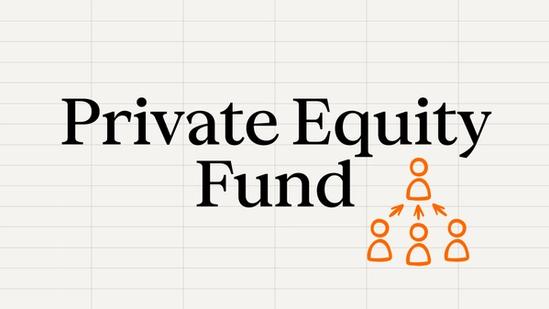Can Asset Bubbles Ever Be a Good Thing?


Explore how asset bubbles, often seen as economic pitfalls, can sometimes be productive drivers of innovation and growth, with insights from financial historian William Quinn.
- Asset bubbles can sometimes be productive, leading to significant technological advancements.
Asset bubbles have long captured the imagination of investors, economists and the wider public. From dizzying rises to devastating freefalls, they make for gripping stories and are often deployed as cautionary tales of collective irrationality and market excess. However, a closer look often reveals a dual nature, even conditions under which asset bubbles might be called productive.
What is an asset bubble?
Asset bubbles are a recurring feature of financial history. They form when the market price of an asset like property, stocks, or even tulip bulbs surges precipitously. Emotion, speculation, or hype push prices upwards, detaching them from the so-called fundamentals, the underlying factors that should anchor an asset’s value.
This unleashes a powerful dynamic that is both psychological and structural. Investors pile in because they hope others will carry on buying, with little regard to the asset’s long-term value. Fear of missing out pushes prices higher still and creates a feedback loop: more buyers are attracted by the rising prices, driving them up further, attracting more buyers, and so on.
The economist Hyman Minksy divided the lifecycle of a bubble into five stages: displacement (excitement around a new opportunity), boom, euphoria, profit-taking, and finally, panic as prices collapse.
The aftermath of a bubble can be severe. When the Japanese property bubble burst in the early 1990s, for example, it led to a “lost decade” of stagnation. However, Japan’s experience is far from unique. History offers no shortage of examples.
The 17th-century Tulip Mania is often cited as the first recorded bubble, with tulip bulbs reaching irrational valuations before collapsing. The 1720 South Sea Bubble followed a similar trajectory, with speculative investment in the South Sea Company causing stock prices to soar before profits failed to materialize and the bubble burst. So too with the British Railway Mania of the 1840s: described by academics as “by many measures the greatest technology mania in history”, investors in Britain’s nascent railway sector incurred enormous losses, though the UK’s railway infrastructure expanded significantly during the period. More recently, the dot-com boom of the late 1990s and the U.S. housing bubble of the mid-2000s showed how bubbles can form around technological or financial innovation and burst with serious consequences.
While these episodes are often recalled for the chaos they caused, there’s more to the story. While some bubbles leave only a legacy of destruction, others have sown the seeds of future progress.
Rethinking asset bubbles
Behavioral narratives have largely dominated our thinking about asset bubbles since the publication of Charles Mackay’s 1841 analysis, Extraordinary Popular Delusions and the Madness of Crowds. Mackay’s perspective framed bubbles as simple cases of herd mentality, and since then, many have represented bubbles as being more about psychology than economics, as moments when rational thinking is suspended in favor of frenzied speculation.
But in recent years, scholars have moved beyond such reductive accounts. One of the most influential contributions has been the ‘Bubble Triangle’ framework introduced by William Quinn and John D. Turner in their 2020 book [object Object].
Rather than boiling everything down to irrationality alone, they argue that bubbles form when three conditions converge:
- Marketability: Assets must be easy to buy and sell, attracting a broad base of participants.
- Money and Credit: An abundance of liquidity and credit fuels rapid price increases.
- Speculation: Investor behavior shifts away from long-term value and toward short-term gain.
The framework likens bubbles to fires, requiring oxygen (marketability), fuel (money and credit) and heat (speculation). “And then what asset you get a bubble in is determined by a spark, which is any kind of event that causes an initial increase in prices,” Quinn, a financial historian at Queen’s University Belfast, explains in an interview. The ‘spark’ – often a new technology or policy shift – ignites a boom. Importantly, the authors argue that removing any one of these elements can prevent or extinguish a bubble.
Still, not everyone agrees that bubbles can be clearly identified, or even exist. Eugene Fama, the economist behind the Efficient Market Hypothesis, has long expressed doubt about the concept of bubbles, arguing that what looks like irrational behavior might just be rational responses to new information.
Yet, beyond the debate over their existence, some have suggested that bubbles can serve as catalysts for innovation and long-term economic growth.
Can asset bubbles be productive?
The concept of a ‘productive bubble’ may seem counterintuitive, but it is one that has been validated by research. For the economist and venture capitalist William Janeway, a productive bubble occurs when financial speculation fastens onto a transformational general-purpose technology that has the potential to create a genuinely new economy.
Speaking to ThinQ, Quinn was quick to point to the dot-com bubble as a classic example. “You have all of this money flowing into this incredibly innovative section of the economy, irrational amounts of money flowing in, which is sort of the opposite of the usual problem we have from a market economic perspective – the fact that research and development often doesn’t pay off quickly enough for firms to invest in it.” The influx of capital fueled the rapid growth of startups and their valuations, before their eventual collapse led to widespread losses. But the lasting benefits are clear: “We got things like the growth of the venture capital industry out of the dot-com bubble, and companies and infrastructure that are still around today,.” Quinn said.
A less well-known example is the British bicycle bubble of the 1890s. The invention of the pneumatic tire and diamond frame made bicycles more comfortable, leading to a short-term craze, overproduction and many bankruptcies. But, Quinn notes, “the companies that survive tend to survive through more technological innovation.” Buoyed by the capital raised during the bubble, the likes of tiremaker Dunlop were given the means to improve their products. “There’s really not much fallout at all,” he adds, “and the long-term effects of the innovations that take place through those companies are still with us today.”
On closer inspection, Quinn stresses that bubbles with positive consequences are usually in technological assets, driving investment into innovative areas that may not have drawn enough resources if markets had behaved rationally. In contrast, destructive bubbles tend to involve borrowed money or systemically important financial institutions, conditions that heighten the risk of crisis.
In this light, bubbles are not just psychological or financial aberrations but complex phenomena that can, under certain circumstances, drive progress.
Is the AI boom a bubble in the making?
It would be hard to miss the current excitement around artificial intelligence. AI is no longer a frontier technology – it’s increasingly featured in product development, investment strategies and policy announcements. Optimism is rising, and estimates suggest the global AI market is could reachr $4.8tn by 2033 – a 25x increase from 2023.
As with the dot-com boom, valuations have risen on the strength of a compelling narrative, even as many companies remain pre-revenue. In 2024, gains in AI-related stocks accounted for nearly all of the wealth accumulated by the world’s richest individuals, according to data compiled by Bloomberg.
“Many AI companies are overvalued at the moment, but I couldn’t tell you which ones… It’s just so easy to raise money by branding yourself as an AI company that there’s going to be a lot of froth in those markets,” says Quinn.
And the AI boom may still be building. “The bubble triangle framework would suggest that it’s only going to really take off whenever interest rates fall, but right now, markets are just maybe a little bit too tight. The amount of capital that could be unlocked is going to be larger, so if there’s a bubble there, it might take a little while to run its course.”
Still, if AI investment is overhyped, it doesn’t mean the outcome will be all bad. As Quinn points out, the mistake investors often make is tying their views on the technology to their views on valuations. “People say, ‘I think AI is good, so I don’t think there’s a bubble in AI stocks,’ or ‘I think AI isn’t that big a deal, so I think these stocks are all in a bubble.’ But actually, the connection between how good AI is as a technology and how much a specific AI company is worth is almost non-existent.”
Rather than focusing on the hype, it may be time to look more closely at what companies are actually doing, what Quinn brands “the more boring and specialized question” of what’s under the hood.
Between speculation and progress
In the end, asset bubbles are neither purely irrational nor uniformly destructive. They are complex phenomena that have the power to both destabilize economies and, at times, be ‘productive’ by speeding up innovation and unlocking lasting growth.
ThinQ by EQT: A publication where private markets meet open minds. Join the conversation – [email protected]




